#thomas kern
Photo


WASTELAND WEEKEND
Photo: Thomas Kerns
http://thomaskernsphoto.com/
12 notes
·
View notes
Text

After watching the “Quiet On Set” documentary, I can’t help but feel like there are literally no good people in the entertainment industry. Even the “good” ones aren’t good. It solidifies that we don’t actually know anything about them. We only know who they present as to the media.
I think like most people around my age, we grew up watching Nickelodeon during its golden age. I always looked forward to watching “All That” not only because it was funny, but because it was something I could watch with my older siblings. It was something the four of us could laugh together about. My sister and I still laugh over the bit from “Keenan and Kel” where Kel admits to dropping the screw in the tuna. So many iconic characters and television shows were created at the hands of Dan Schneider.
What else was created at the hands of Dan Schneider were countless acts of abuse, harassment, manipulation, and much more. His sets were homes to child sexual abusers. Adults who are around children each and every day, taking advantage of their trust and innocence, grooming them and harming them physically and mentally.
It’s not easy for victims of abuse to speak up. Many aren’t believed. Reliving trauma is a horrific experience, so I commend each and every person who shared their story for this docuseries. There were previous cast members who aren’t as well known who got to share their truths, there were crew members sharing stories about Dan’s harassment and sexism on set. There were many crew members that felt uncomfortable about the scenes they were shooting, but no one spoke up. Dan had so much power at Nickelodeon because he kept churning out hit after hit after hit. The parents weren’t much better, but I’ll come back to that.
The docuseries revealed three adult men who were caught for child pornography, and for sexually abusing children. One man’s name is Brian Peck. He groomed Drake Bell for years. Joe Bell, Drake’s father, did everything he could to keep Brian away from Drake because he knew something just wasn’t right with how Brian acted around his son. Brian eventually convinced Drake to fire his father as his manager, and let his mother take over. This gave Brian the room to drive Drake to and from auditions, take him to Disneyland with him and his friends, and more. Drake Bell revealed in the documentary that Brian Peck sexually assaulted and abused him for years. Since Drake was a minor when it started, his identity was kept secret.
During the trial, many people wrote letters for Brian Peck, attesting to his character: James Marden, Taran Killam, Alan Thicke, Thomas DeSano, Ron Melendez, Rider Strong, and Will Friedle. Some of these names are extremely surprising, and others aren't at all.
Joanna Kerns saying, "there must have been some extreme situation or temptation exerted on him to influence is actions" at the time, and is now saying "I have now learned that my letter of support was based on complete misinformation.
Knowing what I know now, I never would have written the letter". For me, it's not even about her writing the letter, it's about her blaming Drake Bell, the victim, and child in the situation, as if Brian Peck wasn't a grown man who should have known better.
Kimmy Robertson also wrote victim blaming language in her letter of support for Brian Peck.
Rich Correll wrote, "it would be my pleasure to work with him again". And then he did! Brian was allowed to work on The Suite Life! Correll later said, they had no input or involvement in the casting". He also went on to say that, "Mr. Peck simply replied that 'the problem had been solved'".
The series went on from there, explaining how Dan’s behaviors just got worse and worse, and he “flew too close to the sun”. The inappropriate sexual innuendo bits on his shows happened more and more frequently. This included constant closeups on actors’ feet, many of the young female actresses being forced to be squirted in the face with various liquids to represent “money shots”. Ariana Grande probably had it the worst in that she had to film videos that went directly to YouTube, many of which included her biting her own toenails, squeezing a potato until juice squirted out of it, etc. Just absolutely disgusting things that do not make sense for a CHILDREN’S television show. These weren’t jokes for kids. This was Dan Schneider abusing his power, and seeing how much he could get away with.
It wasn’t until Jeanette McCurdy’s mother died that Nickelodeon finally launched an investigation into Dan Schneider. Jeanette talks about this in her book, “I’m Glad My Mom Died”, which was a heart wrenching read, but well worth it. Jeanette returned to work a WEEK after her mother died from a long battle with cancer. Because of the backlash she got for that, Nickelodeon realized that it was the culture Dan created that probably made Jeanette feel like she had to come back, that she couldn’t take more time off.
All Nickelodeon did was remove Dan from his sets, and made it so he could only watch from his office and give notes from there. Even though he wasn’t physically on set, the toxic and hostile environment was still alive and well because he was still watching everyone’s every move.
Thanks to #MeToo, more and more women started speaking up about their experiences on set with Dan Schneider. And then in 2018 Nickelodeon finally kicked Dan Schneider to the curb after launching another investigation based off the new claims. The investigation didn't reveal proof of sexual abuse, but it revealed more cases of harassment of his actors and his crews.
Child stars are often made fun of and exploited by the media as they transition into adulthood. We watch their mental health decline until they’re caught having a breakdown. People point and laugh, and say it’s just another child star who couldn’t handle life as a grown up. But what I think a lot of people don’t understand is that many child stars are forced into the entertainment business. Parents put their financial burdens on their children, tell them they need to work to support the family. That’s a lot of pressure to put on a child. So, if something bad is happening on a set, a kid is going to be too afraid to speak up because they could be fired, and if they’re fired, then they’re not making money for their families. The parents are supposed to be on set and with the kids at all times. But so many turn the other cheek and don’t speak up because they don’t want to risk their kids getting fired.
It just feels like no adults, not even the ones you’re meant to trust, are safe to be around. In some way, shape, or form these kids get abused. Whether it’s sexual abuse, racism, inflicted eating disorders, or other types of mental abuse, they’re not safe. No one is looking out for them. Everyone is more concerned with making money.
The entertainment industry squeezes the youth dry and tosses them aside when they can’t legally control them anymore. And we wonder why so many of them have a tough time later on in life. The lucky ones are helped through therapy, and the not so lucky ones either turn up dead, broke, abused, or end up abusing others as they were abused.
I am feeling very sad and heartbroken. And I’m not sure where to go from here. So many of these shows have brought me comfort and laughs over the years. I don’t know if I’ll ever be able to enjoy them again. Is it okay to sit and watch reruns or should we be boycotting everything? I want to help in the ways that I can, but I also know that the world will stop caring about this in a week or so when the next big truth bomb about something else is dropped.
People who have no moral conscious, people who are okay letting children be hurt for the sake of their own wallets shouldn’t have any power. And I hope everyone involved in hurting these kids, past and present, is forced to answer for what they did. I hope they’re shamed and cancelled and doxxed and everything else bad that can happen to people like them. I hope they go broke and become ruined. And at this point, I hope Nickelodeon just crashes and burns. They don’t deserve any salvation.
#dan schneider#quiet on set#drake bell#drake and josh#icarly#jeanette mccurdy#ariana grande#hbo max#all that#victorious#zoey 101#nickelodeon#the dark side of kids tv#brian peck#opinion piece
139 notes
·
View notes
Text
So I looked it up, because of course the Holmes books aren't alone to enter the public domain this year, and Metropolis has too. So here's the list I found of creative works that are now public domain:
Books
— The Gangs of New York, by Herbert Asbury (original publication)
— Death Comes for the Archbishop, by Willa Cather
— The Big Four, by Agatha Christie
— The Tower Treasure, the first Hardy Boys mystery by the pseudonymous Franklin W. Dixon
— The Case-Book of Sherlock Holmes, by Arthur Conan Doyle
— Copper Sun, by Countee Cullen
— Mosquitoes, by William Faulkner
— Men Without Women, by Ernest Hemingway
— Der Steppenwolf, by Herman Hesse (in German)
— Amerika, by Franz Kafka (in German)
— Now We Are Six, by A.A. Milne with illustrations from E.H. Shepard
— Le Temps retrouvé, by Marcel Proust (in French)
— Twilight Sleep, by Edith Wharton
— The Bridge of San Luis Rey, by Thornton Wilder
— To The Lighthouse, by Virginia Woolf
Movies
— "7th Heaven," directed by Frank Borzage
— "The Battle of the Century," a Laurel and Hardy film directed by Clyde Bruckman
— "The Kid Brother," directed by Ted Wilde
— "The Jazz Singer," directed by Alan Crosland
— "The Lodger: A Story of the London Fog," directed by Alfred Hitchcock
— "Metropolis," directed by Fritz Lang
— "Sunrise," directed by F.W. Murnau
— "Upstream," directed by John Ford
— "Wings," directed by William A. Wellman
Musical compositions
— "Back Water Blues," "Preaching the Blues" and "Foolish Man Blues" (Bessie Smith)
— "The Best Things in Life Are Free," from the musical "Good News" (George Gard "Buddy" De Sylva, Lew Brown, Ray Henderson)
— "Billy Goat Stomp," "Hyena Stomp" and "Jungle Blues" (Ferdinand Joseph Morton)
— "Black and Tan Fantasy" and "East St. Louis Toodle-O" (Bub Miley, Duke Ellington)
— "Can't Help Lovin' Dat Man" and "Ol' Man River," from the musical "Show Boat" (Oscar Hammerstein II, Jerome Kern)
— "Diane" (Erno Rapee, Lew Pollack)
— "Funny Face" and "'S Wonderful," from the musical "Funny Face" (Ira and George Gershwin)
— "(I Scream You Scream, We All Scream for) Ice Cream" (Howard Johnson, Billy Moll, Robert A. King)
— "Mississippi Mud" (Harry Barris, James Cavanaugh)
— "My Blue Heaven" (George Whiting, Walter Donaldson)
— "Potato Head Blues" and "Gully Low Blues" (Louis Armstrong)
— "Puttin' on the Ritz" (Irving Berlin)
— "Rusty Pail Blues," "Sloppy Water Blues" and "Soothin' Syrup Stomp" (Thomas Waller)
Source: https://www.voanews.com/a/public-domain-debuts-include-last-sherlock-holmes-work-/6898309.html
733 notes
·
View notes
Text
FUCK, MARRY, KILL: Daniel Brühl Cinematic Universe Edition
Just for funsies. Don't have an aneurysm.
Leaning towards Zemo, Laszlo, and Böse, in that order, at the moment. At some other point, I might have said Thomas Lang, Niki Lauda, and Erik Jan Hanussen.
Because of the 30-photo limitation, I removed his minor and/or underdeveloped roles and the ones that wouldn't be difficult to "kill". I also didn't include the ones I haven't seen, so you won't see Salvador on this list.
p.s. if anyone has a copy/link to that movie with English subs, I'd be forever grateful!
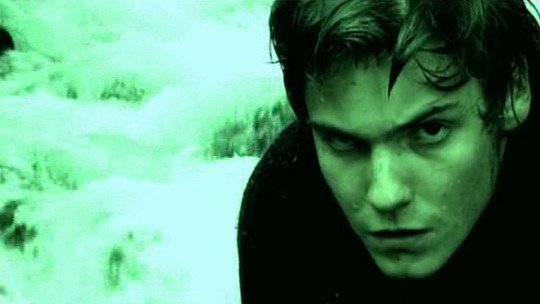
Lukas, The White Sound (2001)

Daniel, No Regrets / Nichts Bereuen (2001)

Alexander Kerner, Good Bye, Lenin! (2003)

Paul Krantz, Love in Thoughts / Was nützt die Liebe in Gedanken (2004)

Jan, The Edukators / Die fetten Jahre sind vorbei (2004)

Andrea Marowski, Ladies in Lavender (2004)

Lieutenant Horstmayer, Merry Christmas / Joyeux Noël (2005)
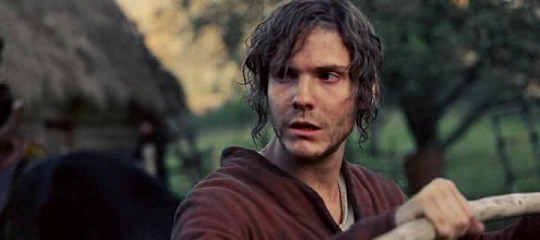
Tonda, Krabat (2008)

Dr. Georg Rosen, John Rabe (2009)
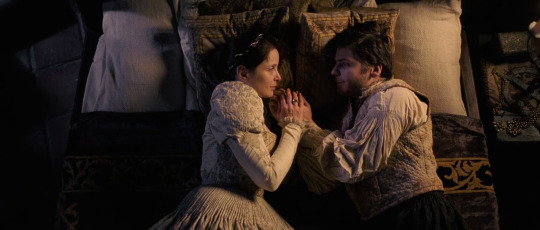
István Thurzó, The Countess (2009)
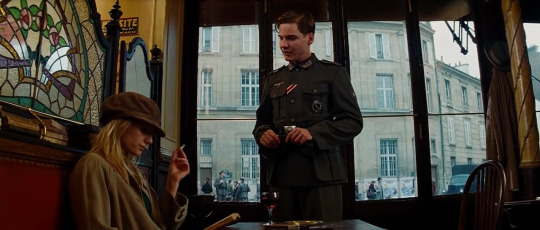
Fredrick Zoller, Inglorious Basterds (2009)
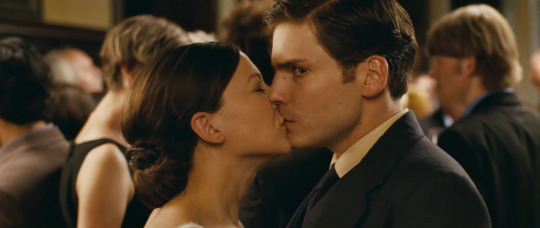
David Kern, Lila, Lila (2009)

Hans Krämer, The Coming Days / Die kommenden Tage (2010)

Konrad Koch, Lessons of a Dream / Der ganz große Traum (2011)
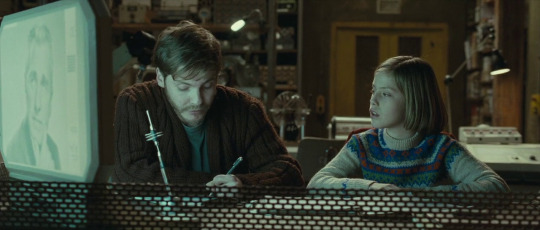
Álex Garel, Eva (2011)
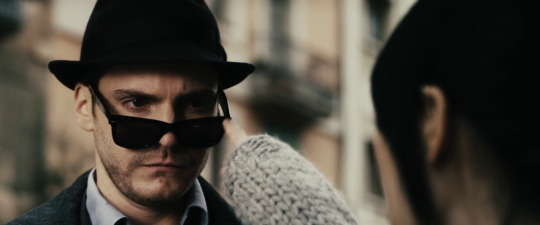
Iván Pelayo, Winning Streak / The Pelayos (2012)
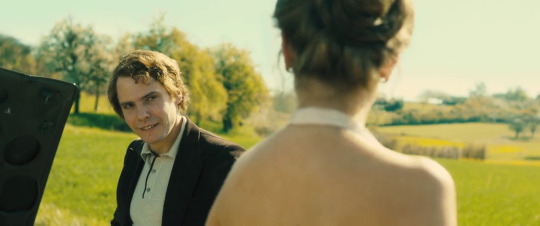
Niki Lauda, Rush (2013)

Daniel Domscheit-Berg, The Fifth Estate (2013)

Thomas Lang, The Face of an Angel (2014)

Daniel, Colonia (2015)
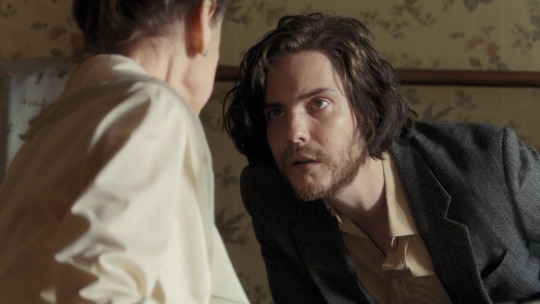
Sebastian Zöllner, Me and Kaminski (2015)

Tony Balerdi, Burnt (2015)

Dr. Laszlo Kreizler, The Alienist (2018 - 2020)

Ernst Schmidt, The Cloverfield Paradox (2018)
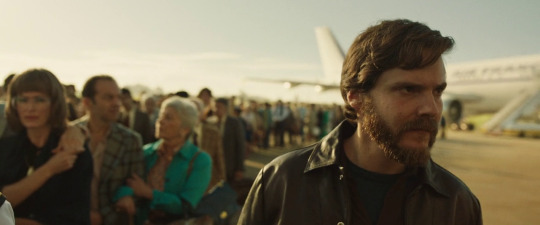
Wilfried Böse, Entebbe (2018)

Thomas Fischer, My Zoe (2019)
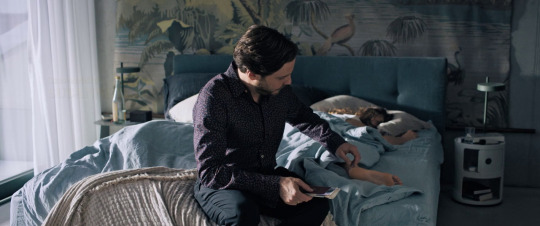
Daniel Weltz, Next Door / Nebenan (2021)
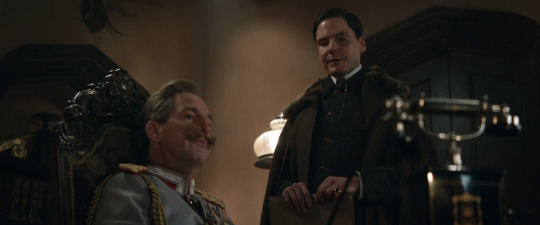
Erik Jan Hanussen, The King's Man (2021)

Baron Helmut Zemo, Captain America: Civil War (2016) / The Falcon and the Winter Soldier (2021)

Matthias Erzberger, All Quiet on the Western Front (2022)
#daniel brühl#helmut zemo#the falcon and the winter soldier#laszlo kreizler#the alienist#fuck marry kill#baron zemo#tfatws#tony balerdi#niki lauda#Andrea Marowski#Sebastian Zöllner#Tonda#colonia#Daniel Wetltz#Thomas Lang#Fredrick Zoller#Konrad Koch#no regrets#alexander kerner#paul krantz#Álex Garel#Hans Krämer#the edukators#Joyeux Noël#Dr. Georg Rosen#István Thurzó#David Kern#The White Sound#Matthias Erzberger
86 notes
·
View notes
Text


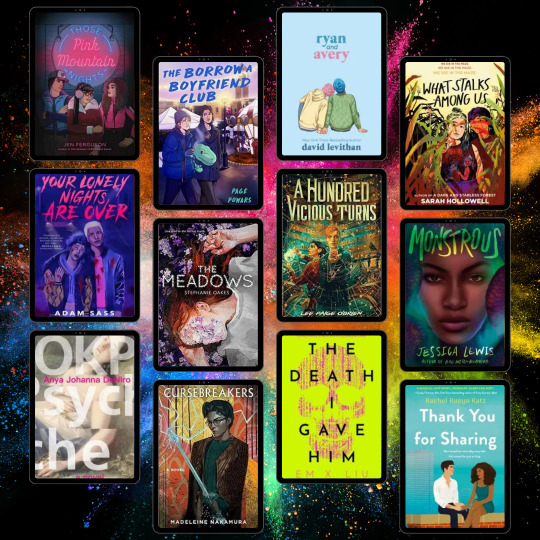


💜 Queer Book Releases Coming Out September 2023
🦇 Trying to read queer all year? Make sure to check out these queer September releases!
❤️ Forget I Told You This by Hilary Zaid
🧡 The Otherwoods by Justine Pucella Winans
💛 The Lonely Book by Meg Grehan
💚 Every Star That Falls by Michael Thomas Ford
💙 Fly With Me by Andie Burke
💜 Wound by Oksana Vasyakina
🖤 Into the Bright Open by Cherie Dimaline
❤️ A Shot in the Dark by Victoria Lee
🧡 Straight Expectations by Callum McSwiggan
💛 Herc by Phoenicia Rogerson
💚 Deephaven by Ethan M. Aldridge
💙 The Mossheart’s Promise by Rebecca Mix
💜 Those Pink Mountain Nights by Jen Ferguson
🖤 The Borrow a Boyfriend Club by Page Powars
❤️ Ryan and Avery by David Levithan
🧡 What Stalks Among Us by Sarah Hollowell
💛 Your Lonely Nights Are Over by Adam Sass
💚 The Meadows by Stephanie Oakes
💙 A Hundred Vicious Turns by Lee Paige O’Brien
💜 Monstrous by Jessica Lewis
🖤 OKPsyche by Anya Johanna DeNiro
❤️ Cursebreakers by Madeleine Nakamura
🧡 The Death I Gave Him by Em X. Liu
💛 Thank You for Sharing by Rachel Runya Katz
💚 You, Again by Kate Goldbeck
💙 Godkiller by Hannah Kaner
💜 The Society for Soulless Girls by Laura Steven
🖤 Mammoths at the Gates by Nghi Vo
❤️ A Market of Dreams and Destiny by Trip Galey
🧡 A Crown So Cursed by L.L. McKinney
💛 In the Ring by Sierra Isley
💚 How to Find a Missing Girl by Victoria Wlosok
💙 This Spells Disaster by Tori Anne Martin
💜 The Free People’s Village by Sim Kern
🖤 Idlewild by James Frankie Thomas
❤️ Glitter and Concrete: A Cultural History of Drag in NYC by Elyssa Maxx Goodman
🧡 Cleat Cute by Meryl Wilsner
💛 Mall Goth by Kate Leth
💚 The Siren, the Song, and the Spy by Maggie Tokuda Hall
💙 This Dark Descent by Kalyn Josephson
💜 A Nobleman’s Guide to Seducing a Scoundrel by KJ Charles
🖤 The Problem with Gravity by Michelle Mohrweis
❤️ Alex Wise vs. the End of the World by Terry J. Benton-Walker
#books#reading#book releases#book blog#booklr#batty about books#battyaboutbooks#queer book recs#queer fiction#queer books#queer#queer community#read queer all year
125 notes
·
View notes
Text
Happy New Years everyone! Best wishes from all the Tiny Brühlies, they’re having a New Year’s party XD jfjdkdkdkd — December 31

List of Brühlies (please refer to December 22 post to see the number references)
1. Paul Krantz - Love in Thoughts
2. Lt Horstmayer - Joyeux Noël
3. Matthias Erzberger - all quiet on the western front
4. Tonda - Krabat
5. István Thurzó - The Countess
6. Checo - Schlaraffenland/Paradise mall
7. Jan - Die fetten Jahre sind vorbei/The Edukators
8. Father Antonio - The Intruders
9. Other Dirk - All together
10. David Kern - Lila Lila
11. Daniel Weltz - Nebenan
12. Niki Lauda - Rush
13. Sebastian Zöllner - Ich und Kaminski
14. Konrad Koch - Der ganz große Traum
15. Alex Kerner - Goodbye Lenin
16. Andrea - Ladies in lavender
17. Daniel - Colonia
18. Hans Krämer - Die kommenden Tage
19. Wilfried Böse - 7 days in Entebbe
20. Ernst Schmidt - The Cloverfield Paradox
21. Iván Pelayos - The Pelayos
22. Dr Laszlo Kreizlier - the Alienist
23. Daniel Berg - the fifth estate
24. Alex Garel - Eva
25. Thomas Lang - The face of an Angel
26. Lukas - das weiße rauschen/The white sound
27. Dirk Brûlée - Everything at once
28. Hubertus Czernin - Woman in Gold
29. Marko - Elefantenherz
30. Baron Zemo - Marvel
31. Tony Balerdi - Burnt
#panny art#1yr challenge#art#digital art#procreate#chibistyle#daniel brühl#brühlies#tiny zemo#tiny laszlo#tiny schmidt#tiny tony#there is literally to many for the tags#but omg I did it#I got threw a whole year of drawing everyday#aaaaaaaaaaaaa#tiny dirk brûlée
121 notes
·
View notes
Text
youtube
Watch Evangelical and Charismatic pastors speak in gibberish to each other. This is the craziest speaking in tongues compilation video ever made. Watch T.D. Jakes, Paula White, Robert Tilton, Rodney Howard-Browne, Becky Fisher, Kerney Thomas, Joel Osteen's Prayer line, Nancy Harmon, Perry Stone, and Terrence McKenna speak in tongues and make a fool of themselves. And these are some of the people advising President Trump.

OH WAIT!. IT'S RELIGION!. SO YOU CAN!
6 notes
·
View notes
Text

Distanzschaffen
1.
Das Forschungsprojekt zu Warburgs Staatstafeln ist im Moment auch ein Lehrprojekt.
In einer Lehrveranstaltung an der Bucerius Law School lehre ich Grundlagenforschung. Grundlagenforschung ist kurz gesagt Forschung im Bereich der Geschichte, Theorie und Philosophie. Möchte man einen gründlichen Eindruck davon haben, was an deutschen Universitäten und Fachbereichen im Bereich der Rechtswissenschaft als Grundlagen gelehrt wird empfehle ich mindestens zwei Bücher: Rechtstheorie, ein Lehrbuch von Thomas Vesting und einen Sammelband von Julian Krüper über Grundlagen des Rechts. Es sollen mindestens zwei Sachen sein, die man liest, um sich von Anfang an daran zu gewöhnen, dass die Dinge unterschiedlich betrachtet werden, schon weil sie unterschiedlich sind. Ambitionierten Studentinnen und Studenten würde ich empfehlen, unbedingt in ausländische und fremdsprachige Literatur oder aber in Lehrbücher einer Zeit zu schauen, von der man glaubt, sie sei weit entfernt und schon vorbei. Auf die eine oder andere Weise sollte man zwar einen Kanon kennen, aber auch von Anfang am eine Fremdheitserfahrung mitmachen, darüber staunen, dass selbst Grundlagen kommen und gehen, naheliegend und fernliegend sein können - und nichts einem abnimmt, dazu selbst eine Position zu entwickeln. Kein Gott, kein Papa und keine Mama, keine Mitgliedschaft in irgendeiner Partei, einem Verein, einer Gemeinde, keine Angehörigkeit, zu keiner Familie, keiner Kultur nimmt einem ab, diese Position zu entwickeln: Die Fähigkeit, zu etwas entweder ja oder nein sagen zu können und dafür die Verantwortung zu übernehmen. Man nicht einfach sagen, man sei Jurist, Mann, Katholik, ein Steinhauer, weiß, deutsch, links, rechts oder mittig, groß oder klein, ganz oder kaputt und darum müsse man so denken, wie man denke, so urteilen, wie man urteile und nur das wissen, was was wisse. Es gibt keine Ausreden, nichts, auf das abschieben ließe, was man denkt, sagt, urteilt und wissen will.
An den Grundlagen gibt es keinen Status keine Garantie. Insofern verstehen wir die Metapher der Grundlage wie einen staubigen Boden, schon Heimatboden, Weg, Straße oder Bürgersteig, erst recht Salonparkett oder Tanzfläche wäre zu viel gesagt für das, was in dem Sinne Grundlagen sind. Gunther Teubner hat einmal einen Text geschrieben unter dem Titel hit the bottom , das kommt von einem Straßenweisheit, die Süchtige teilen. Erst wenn man am Boden sei, beginne die Hilfe. So ein bottom, das kommt der Art und Weise, wie ich Grundlagen verstehe, schon näher.
Wer in diesem Bereich einen Schwerpunkt setzt muss die beiden erwähnten von Thomas Vesting und Julian Krüper (Mit einer Reihe von Autoren) gut kennen.Um sie gut zu kenne muss man sie mehrfach lesen und in seinem eigenen Zettelkasten verarbeiten. Das ist Hausarbeit, nix für Liveveranstaltung und Zoom, Cobra übernehmen sie.
Mein Lehrveranstaltung soll primär lehren, zu forschen und nur insoweit auch Wissen vermitteln. Sie soll lehren, mit den Grenzen des Wissens umzugehen, mit Unwissen und Unsicherheit umzugehen: denn das ist Forschung, man schwimmt oder schwebt, stolpert oder stottert.
2.
Ich verzichte darauf, die Grundlagenforschung als Forschung an oder Suche nach demjenigen zu verstehen, was am Recht ursprünglich, der Kern, universal, allgemein oder systematisch wäre. Ich verzichte darauf, die kleinsten Elemente oder die größten Unterscheidungen vorzustellen. Grundlagen verstehe ich nicht als die tiefsten und stabilsten oder die höchsten und idealsten Elemente des Rechts.
Unter Grundlagen verstehe ich im Kontext der Grundlagenforschung (!) Grenzobjekte, sog. boundary objects (Susan Leigh Star). Das sind Objekte, an denen die Rechtswissenschaft oder Juristen ihr Wissen teilen und man auf etwas stößt, das den Juristen entweder nicht eigen, sondern fremd ist, was diesem juristischen Wissen nicht entspricht, vom juristischen Wissen nicht gefasst ist, dieses Wissen negiert, ihm ausweicht, sich ihm entzieht, es anstösst, ihm anstössig ist oder aber diesem Wissen widerspricht. Man gerät ans Außen, ins Außen.
Juristen widersprechen sich doch ohnehin dauernd. Stimmt. Die Grenzen des Recht laufen nämlich mitten durch das Recht. Wenn es für das Recht so etwas gibt, was zentral sein soll, dann ist auch das schon durchsetzt von anderem als Recht. Wären das zum Beispiel Begriff dann sitzen diese Rechtsbegriffe anderem auf; sie auch bestehen aus anderem, sind Übersetzungen, Kreuzungen oder, wie Ino Augsberg sagt: Verfaltungen. Man muss an solchen zentralen Begriffen nichts ändern, ihre Stellung und ihre Form nicht ändern, und sie bezeichnen dann kein Recht, sondern etwas anderes, zum Beispiel Unrecht, aber auch etwas, in dem die Unterscheidung zwischen Recht und Unrecht keine zentrale, keine tragende Rolle spielt. Sind es keine Begriffe, hält man aber Organisationen für zentral, zieht sich mitten durch solche Organisationen, mitten durch Gerichte, Parlamente, Ministerien oder Kanzleien das, was ihnen äußerlich ist und ihnen so eigen wie fremd sein kann. Cornelia Vismann hat das anhand von Akten beschrieben, Bruno Latour anhand des Conseil d' Etat in Paris.
Grenzobjekte liegen auf der Straße, Grenzobjekte tauchen alltäglich auf. Sie mögen im Bereich des Rechts dem einen oder anderen so wirken, wie Wunder im Bereich der Religion oder Revolutionen im Bereich anderer Wissenschaften und der Gesellschaft. Das heißt, dass Juristen an Grenzobjekten zu Nichtjuristen werden können; Rechtswissenschaft kann an Grenzobjekten aufhören, Rechtswissenschaft zu sein. Und anfangen kann beides dort auch.
An Grenzobjekten kommt die Rechtswissenschaft und kommen alle epistemischen Weisen der Juristen, also ihr Wissen, ihr Denken, ihr Glauben, ihr Fühlen, ihr Ahnen an Grenzen. An Grenzobjekten teilt sich das Wissen, es bricht sich oder reißt auf. An Grenzobjekten ist das, was Juristen schreiben, dasjenige, was Friedrich Nietzsche in Also sprach Zarathustra in einem Kapitel über alte und neue Tafel (also zum Beispiel alte und neue Gesetzestafeln oder aber alte und neue Bilder) 'halbgeschrieben' nennt. Referenzen sind an Grenzobjekten Halbreferenzen: es ist unsicher, ob und inwieweit sie dort Selbstreferenz oder Fremdreferenz sind. An Grenzobjekten stimmt etwas nicht, sie haben sogar nur teilweise eine Stimme, etwas anderes an ihnen hat für den Juristen nur Laut, macht ihm nur Krach oder scheint ihm stumm. Über Grenzobjekte haben Juristen teilweise Informationen, gleichzeitig rauschen diese Objekte.
Die Differenz, die Juristen operationalisieren, um mit Differenz umgehen zu können, behält an Grenzobjekten ihre Unruhe, sie bleibt ungestillt, ebenso wie die Operationalisierung selbst. Die Differenzierung geht dort nicht aus und nicht auf.
Metaphorisch gesprochen: An Grenzobjekten ist das Wissen nervös und unruhig, es flimmert wie ein Magen, wenn man entweder Schmetterlinge im Bauch hat, ein langer aufgeschobener und nun unvermeidbarer Zahnarzttermin oder gar die Wahlen in Thüringen anstehen.
Man kann sagen, dass das Wissen der Juristen an Grenzobjekten deutlich mangelhaft ist - muss aber einräumen, dass das kein Nachteil sein muss, sondern auch ein Vorzug sein kann, zumindest resultiert daraus Produktivität, zumindest Antrieb oder Anstoß. Hoffentlich banaler gesagt: An Grenzobjekten müssen sich Juristen bewegen oder stemmen, an Grenzobjekten müssen sie etwas tun, Aufwand betreiben. Grenzobjekte sind alles andere als selbstverständlich. An Grenzobjekten entzündet sich hoffentlich ihre Neugierde, an ihnen wollen sie etwas wissen oder müssen sie etwas wissen wollen. An Grenzobjekten ist die Widerständigkeit und Insistenz des Normativen nicht zu ignorieren. Grenzobjekte haben Juristen nicht im Griff, die wollen sie vielleicht im Griff haben. Sie haben sie nicht im Blick, die huschen vielleicht durch den Blick.
An Grenzobjekten stoßen Juristen nicht ins Leere oder Freie, dort liegt nicht einfach und endlich der Ausgang in Freiheit, Emanzipation und Transzendenz. Das Wissen wendet sich dort, windet sich ohne weiter Qualifikation - und wir unterstellen der Einfachheit halber, dass hinter Grenze ein anderes, vielleicht entgegengekehrtes, vielleicht verkehrtes Wissen liegt.
Seitdem die Gesellschaft ihr Wissen so schön sortiert und die Wissenschaften ihre Grenzpolizisten aufstellen, die darüber wachen, dass nur Recht Recht und Recht nur Recht ist, Politik nur Politik und nur Politik Politik, Kunst nur Kunst und nur Kunst Kunst, Meteorologie nur Meteorologie und nur Meteorologie Meteorologie, Polarforschung nur Polarforschung und Polarforschung Polarforschung ist, ist die Bestimmung von Grenzobjekten einfacher geworden. Seitdem kann man schlicht und fröhlich sagen, dass Rechtswissenschaftler sich an Grenzobjekten das Wissen mit anderen Wissenschaftler teilen müssen, dass sie dort ihre Normen mit anderen Wissenschaftlern teilen müssen, dass sie dort Normen übersetzten müssen, Begriffe übersetzen müssen, Bilder, Objekte und überhaupt alles mögliche übersetzen müssen. Seitdem kann man einfach sagen, dass Juristen dort, an den Grenzobjekten, ihr Wissen teilen und übertragen müssen, was schön gesagt ist, weil es so klingt, als sei dieses Wissen eigentlich ganz und müsste jetzt nur wie ein Kuchen, den man teilen und doch ganz haben kann, übergeben.
2.
Juristen sagen zu allem in der Welt etwas. Sie sagen dazu, was der Mensch ist, wann er anfängt und aufhört, wann er lebt und stirbt, wie Männer und Frauen sich unterscheiden sollen, was ein Kind ist und was ein Tier ist, was biologisch angebauter Weizen sein soll, was ein Verkehrsunfall oder eine Ehe sein soll, was ein Unternehmen oder eine Gesellschaft sein soll, was Kunst oder Religion sein soll. Sie pusten ihr Wissen über alles und jeden und beschichten und belegen alles und jeden damit. Fast jeder hat einen Pass, die anderen müssen sich sagen lassen, sie hätten keinen. Kaum versieht sich das Neugeborene, wird es irgendwo zu einen Angehörigen oder Mitglied, durch welchen Rechtsakt und in welcher Rechtsform auch immer. Und den Rest der Welt qualifizieren Juristen ebenfalls mit, sogar zu der Frage, ab wann ein Himmelskörper ein Planet sein soll, gibt es Verträge und Satzungen, Beschlüsse und Entscheidungen. Man überzieht auch das astronomische Wissen mit Rechtsform.
In dem Augenblick, wo andere Wissenschaftler aber etwas über das Recht sagen, wenn also ein Rechtswisenschaftler nicht sagt, was ein Bild sein soll, sondern ein Bildwissenschaftler wie Aby Warburg sagt, was Recht sein soll, schaltet eine große Anzahl von Rechtswissenschaftler um: Der sei ja gar kein Rechtswissenschaftler und könne gar nicht sagen, was Recht sei. Am besten nimmt man das mit Komik, ernst nehmen soll man es nicht. Nicht in meinen Lehrveranstaltung zur Grundlagenforschung.
3.
Eine der Autoritäten zu Bild- und Rechtswissenschaft in Deutschland schreibt in einem Buch über Pictorial Law: Writing creates distances. Die Passage ist typisch. Der Autor zitiert dort nämlich berühmte Medienwissenschaftler. An anderen Stellen zitiert er berühmte Bildwissenschaftler. Aber eins ist seltsam. Wenn Juristen Juristen zitieren, dann taucht im Fußnotenapparat früher oder später "a.A." auf, eine Ausscheidung. Früher oder später taucht auf, dass Juristen immer unterschiedlicher Meinung sind. Kein Wunder, Juristen sind dafür da, Unterschiede zu bearbeiten, sie sind für Unterschiede und Auseinandersetzungen zuständig.
Schlechte Grundlagenforschung, die oft als interdisziplinär beschrieben wird, erkennt man daran, dass die Autoren andere Wissenschaftler so zitieren, als sei deren Bereich unumstritten. Wenn Juristen Bildwissenschaftler so zitieren, als wüßten Bildwissenschaftler mehr und sicherer, unbestrittener und widerspruchsloser Bescheid über Bilder und als kämen sie widerspruchslos und ohne Streit der Wahrheit des Bildes näher als Rechtswissenschaftler, dann handelt es sich um schlechte Grundlagenforschung. Das ist nämlich ein billiger und durchschaubarer Trick. Vielleicht behaupten deswegen einige Rechtswissenschaftler, Rechtswissenschaft sei keine Bildwissenschaft, nämlich damit sie im nächsten Zug behaupten können, Bildwissenschaftler würden nicht wie Rechtswissenschaftler darüber streiten, was ein Bild sein soll.
Als würde das Bild an einer Stelle aufhören, normativ zu sein, aufhören, ein Effekt von Kulturtechniken und operativer Ontologie zu sein - und ab da würde es natürlich wie ein unberührte Blumenwiese oder ein völlig unumstrittener und von allen geliebter Hundewelpe oder ein von allen gehasster halbflüssiger Kuhfladen. Die oben in dem abgebildeten Text zitierten berühmten Autoren sind in der Medienwissenschaft umstritten. Walter Ong und Jack Goody sind umstritten: dem einen, Ong, wird ein verkappter Hegelianismus vorgeworfen (er schreibt von der Erweiterung des Geistes durch die Schrift) , der andere, Jack Goody, zaudert in seinen Schreiben ohnehin schon deutlich, hadert mit sich selbst und entwickelt darauf eine wunderbare Kritik an etwas, was er eine große Trennung nennt (dazu später mehr).
Writing creates distance: Das ist umstritten. Vor allem zitiert man nicht einfach. Man zeigt nicht einfach Sätze, man muss schon sagen, was man dann unter writing versteht und unter creating distance. Ist writing Graphik, ist also auch Choreographie und Photographie writing? Schafft man eine Distanz auch dann, wenn man eine Distanz kleiner macht, als sie vorher war? Oder nur dann, wenn man sie größer macht, als sie vorher war? Oder schöpft man die Distanz aus dem Nichts, ist das also eine reine Erfindung, der in der Welt sonst gar nichts entspricht, ist Distanz pure Phantasie, pure Fiktion oder weltfremde Dogmatik?
2 notes
·
View notes
Text
Streaming today:
Dracula das Musical, Ulm Proshot 2021 (official DVD)
Cast: Thomas Borchert (Dracula), Patrick Stanke (Abraham van Helsing), Alexandra-Yoana Alexandrova (Mina Harker), Navina Heyne (Lucy Westenra), Philip Schwarz (Jonathan Harker), John Davies (Renfield), Robert Tilson (Arthur Holmwood). ), J. Emanuel Pichler (Jack Seward), Thomas Schön (Quincey Morris), Lynelle Jonsson (Vampirin), Maren Kern (Vampirin), Christina Fry (Vampirin)
When: today (Friday), 7pm gmt+1
Where: European Musical Theatre (discord server)
Feel free to join and reblog!
#european musicals#european musical theatre#tanz der vampire#dracula daily#dracula musical#musical#musical stream#musical streams#thomas borchert#patrick Stanke
9 notes
·
View notes
Photo

WASTELAND WEEKEND
@ladyneon85
Photo: Thomas Kerns
http://thomaskernsphoto.com/
8 notes
·
View notes
Photo


December 7th 1174 saw the release William I ‘the Lion’.
Some sources say December 8th……
Third mention of the week for Oor King Wullie, Scotland's longest serving monarch.
William is said to have been a ferocious warrior and military commander, but of questionable ability as a tactician, by English chronicle accounts. He led a band of well armed men, a mix of wild Irish Kerns, Norman-Scots, Celts and Galloway men. According to the chroniclers the Irish "slaughtered children, ripped open pregnant women, and cut down priests at their altars." But, this type of description of William's actions were written by frightened and highly propagandized English chroniclers, whose prose was so compelling that later chroniclers and writers would use this same propaganda when they described the behaviour of William Wallace's men, it was meant to put the fear of god into anyone who listened to the stories being told, most commoners back then only had these religious men, who were the main historians, to tell them the tale.
William was captured at the Battle of Alnwick in 1174, full details of that are on another post.
Anyway The English king had recently scourged his own body in penance for the murder of Thomas Becket. Henry, now feeling purified by this, accepted Williams capture as a gift from God and the dead archbishop (Becket).Henry sent the Scots king to a prison in Falaise and sent an avenging English army to Scotland, where it took the castles of Berwick, Roxburgh, Jedburgh and Edinburgh, wasting or taxing all the country.
In bitter exile in Falaise, Normandy, The Lion became a sheep. William was not married and his brother was also a prisoner, the line of Canmore faced extinction, or at least expulsion, if both were imprisoned until death.
Henry II now extracted an oath of allegiance from William, that Henry was his feudal superior, now this oath is of super importance as it was the claim that Edward I and other future English kings would use on Scotland.
The English king spelled out exactly what the act of homage meant: William held Scotland only by permission of Henry II. Scottish soldiers were to be evacuated from the castles and garrisons, and replaced by English troops. And the entire expense(s) of the English garrisons, now all over Scotland, were to be paid by the Scots for the English occupation!
William had to acknowledge Henry as his feudal superior and agree to pay for the cost of the English army’s occupation of Scotland by taxing the Scots.
The cost was equal to 40,000 Scottish marks (£26,000). The church of Scotland was also subjected to that of England. William acknowledged this by signing the Treaty of Falaise, and was then allowed to return to Scotland. In 1175 he swore fealty to Henry II at York Castle.
Due to the terms of the Treaty of Falaise, King Henry II had the right to choose William’s bride. As a result, William married Ermengarde de Beaumont, a great-granddaughter of King Henry I of England, at Woodstock Palace in 1186.
Edinburgh Castle was her dowry. The marriage was not very successful, and it was many years before she bore him an heir, the future King Alexander II of Scotland.
19 notes
·
View notes
Text
37 Ancient Lost Texts on Buddhism
The Lost Book Project charges $7 for this collection. If you found this roundup useful, please consider donating to the Internet Archive instead.
Other roundups here
The Manual Of Zen Buddhism by D. T. Suzuki (1921)
The Light of Asia by E. Arnold (1894)
A Buddhist Bible by D. Goddard (1921)
Dhammapada And The Sutta Nipata by F. M. Muller (1881)
31 Planes Of Existence by Jinavamsa (1891)
Esoteric Buddhism by A. P. Sinnett (1889)
The Dhammapada, a Collection of Verses; Being One Of The Canonical Books Of The Buddhists by Max Muller (1881)
Buddha and Buddhism by Arthur Lillie (1900)
The Gospel Of Buddha by P. Carus (1917)
The Questions Of King Milinda Pts. 1 & 2 by T. W. Rhys Davids (1890)
The Tree Of Wisdom by Nagarjuna (1919)
A Buddhist Catechism by H. S. Olcott (1908)
A Record Of Buddhistic Kingdoms by J. Legge (1886)
Buddha His Life, His Teachings by M. N. Shastri (1901)
Buddhist Mahayana Texts Pts. 1 & 2 by E. Cowell (1894)
Buddhist Suttas by T. W. Rhys Davids (1881)
Early Buddhism by T. W. Rhys Davids (1908)
Eastern Stories and Legends by M. L. Shedlock (1920)
Nirvâna - A Story of Buddhist Psychology by P. Carus (1902)
Sermons Of A Buddhist Abbot Zen For Americans by S. Shaku (1906)
Buddhist Scriptures by E. J. Thomas (1913)
The Buddhist praying-wheel - a collection of material bearing upon the symbolism of the wheel and circular movements in custom and religious ritual by W. Simpson (1896)
The Dhammapada by Suriyagoda Sumangala Thera (1914)
The Essence of Buddhism by P. Lakshmi Narasu (1907)
The Gateless Gate by Ekai, called Mu-Mon (1921)
The Gods of Northern Buddhism by A. Getty (1914)
The Jataka or stories of the Buddha's former births Vols. 1, 2, 3 & 6 by E. B. Cowell (1895)
The legends and theories of the Buddhists, compared with history and science, with introductory notices of the life and system of Gotama Buddha by R. S. Hardy (1866)
The Life Of Buddha by A. F. Herold (1922)
The life of the Buddha and the early history of his order by W. W. Rockhill (1907)
The life, or legend, of Gaudama, the Buddha of the Burmese Vol. 2 by P. Bigandet (1911)
Ed note: Both volumes because I love you <3
The Saddharma Pundarika by H. Kern (1884)
The Soul Of a People by H. Fielding (1902)
The Way Of The Buddha by H. Baynes (1913)
The Way to Nirvana by L. de la Vallée Poussin (1917)
The wheel of the law. Buddhism, illustrated from Siamese sources by the Modern Buddhist, a Life of Buddha, and an account of the Phrabat by H. Alabaster (1871)
The word of the Buddha; an outline of the ethico-philosophical system of the Buddha in the words of the Pali canon, together with explanatory notes by B. Nyanatiloka (1907)
2 notes
·
View notes
Text
Post Modern Art
Escaping Confines of Museum

City, Michael Heizer. Located in Garden Valley, a desert valley in rural Lincoln County in the U.S. state of Nevada. land art sculpture. 1970-2022
Collapsing Boundaries Between High and Low

Curious Kitten watercolor painting is a painting by Svetlana Novikova which was uploaded on February 23rd, 2013.
Rejecting Originality

Andy Warhol 1928–1987. Silkscreen ink and acrylic paint on 2 canvases. 1982
Jouissance
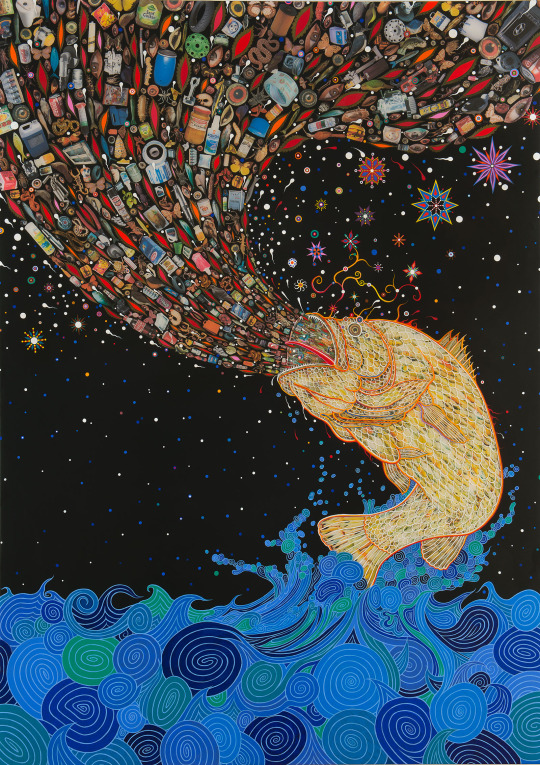
Fred Tomaselli, 2014, 60″ x 84″, photo-collage, leaves, acrylic and resin on wood panel, © 2014, courtesy of James Cohan Gallery and the artist
Working Collaboratively

Meow Wolf. Sept. 13, 2021.
Adam Christopher
Andi Todaro
Ashley Frazier, Michael Sperandeo
Brandan Styles "Bzurk”, Ellie Rusinova
Brian Corrigan
Cal Duran, David Ocelotl Garcia
Cami Galofre
Chris Bagley
Christopher Owen Nelson
Christopher Short
Collin Parson
Corrina Espinosa
Dan Taro
David Farquharson
Dice 51
Douglas A. Schenck “DAS”
Dylan Gebbia-Richards
Frankie Toan
Ian McKenna
Jaime Molina, Pedro Barrios
Jennifer Pettus
Jess Webb
Jodi Stuart, Libby Barbee
Joseph Lamar
Joshua Goss
JUHB.
Justin Camilli
Justin Gitlin aka Cacheflowe
Kalyn Heffernan, Gregg Ziemba
Katy Zimmerman, Erika Wurth
Kia Neill
Kristin Stransky
Laaiaim Mayer
Lauri Lynnxe Murphy
LORDSCIENCE UNIVERSAL
Lumonics
Marjorie Lair, Kyle Vincent Singer
Maya Linke
Myah Sarles
Nicole Banowetz
Nolan Tredway
Ramón Bonilla
Reed Fox, Ben Weirich
Sabin Aell, Randy Rushton
Scott Hildebrandt
Sean Peuquet
Shayna Cohn
Sigrid Sarda
Sofie Birkin
Thomas Scharfenberg
Viviane Le Courtois
Wanderweird
Wynn Earl Buzzell Jr.
Andrew Novick, Pamela Webb, Robert Ayala
bearwarp
Chad Colby, Lexis Loeb, Hayley Kirkman
Charles Kern, Ty Holter, Ben Jackson, Rachel Bilys, Brett Sasine
Demiurge LLC: Joe Riche and Wynn Buzzell
Eriko Tsogo, Jennifer Tsogo, Tsogo Mijid, Batochir Batkhishig
F. Ria Khan, Armon Naein, Blake Gambel, Calvin Logan, Charles Candon, Harrison Bolin, Luke Collier, Maria Deslis, Sky Johnson, Sofia Rubio-Topete
Ladies Fancywork Society
Merhia Wiese, Annabelle Wiese, Maggie Wiese, Eunseo Zoey Kim, Dan Griner
Mike Lustig, Mitch Hoffman, Tim Omspach, Nathan Koral, Evan Beloni, Ryan Elmendorf, Scott Wilson, Charlis Robbins
Molina Speaks, Stevon Lucero, DJ Icewater, Felix "Fast4ward" Ayodele, Diles, Emily Swank
Oren Lomena, Alaine "Skeena" Rodriguez, Alius Hu
Peniel Apantenco, Kim Shively, Colin Richard Ferguson Ward, (In memoriam)
Sam Caudill, Sean Louis Rove, Juancristobal Hernández
Secret Love Collective: Katy Batsel, Lares Feliciano, Colby Graham, Piper Rose, Frankie Toan, Katy Zimmerman, Lauren Zwicky, Genevieve Waller
The Church of Many: Andrea Thurber, Elsa Carenbauer, Anna Goss, Maddi Waneka and Emily Merlin
Waffle Cone Club: Kyle Vincent Singer, Scott Kreider, Marjorie Lair
Everything is Terrible!
Kevin Bourland
Michael Lujan
Moment Factory
Nina Mastrangelo
Scott Geary, Wayne Geary, Gary Ashkin
Appropriating

Paneel "Rehearsal for an Icon 2001 - Mona Lisa" von Olbinski, Grafikdruck. Digital Print
Hybridizing
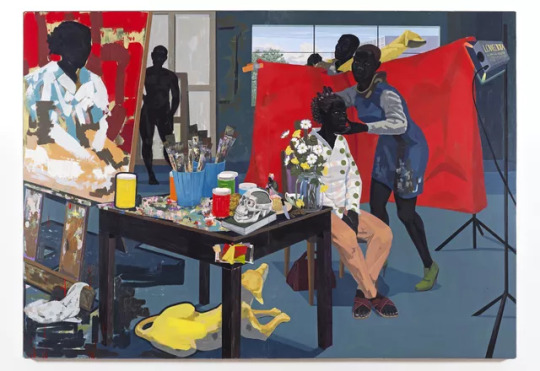
Untitled (Studio)2014
Kerry James Marshall
Simulating

Andy Warhol
(American, 1928–1987) 1962. Synthetic polymer paint on thirty-two canvases, Each canvas 20 x 16" (50.8 x 40.6 cm). Overall installation with 3" between each panel is 97" high x 163" wide
Mixing Media
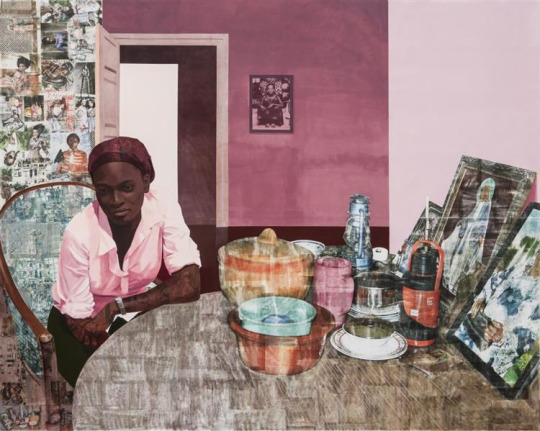
Mama, Mummy and Mamma (Predecessors #2)
Njideka Akunyili Crosby. 2014
Layering

Zephyrus Rising, 2022. Acrylic on Acrylic. 32 × 16 × 22 in Duncan McDaniel
Mixing Codes
Recontextualizing

Leonardo da Vinci’s Mona Lisa, 1503-6; On Winnie: Denis Colomb stoles (worn as a headdress, top and sleeves)
Confronting the Gaze

Harley Quinn in Suicide Squad David Ayer 2016 (left), Harley Quinn in Birds of Prey Cathy Yann 2021 (right)
Facing Abject

Jane Alexander, Butcher Boys, 1985/86, mixed media (Iziko South African National Gallery, Cape Town, photo: Goggins World, CC BY-NC-ND 2.0)
Constructing Identities
Creating Metaphors

Martin Puryear. Ladder for Booker T. Washington, detail, 1996. Installation view at the Modern Art Museum of Fort Worth, Texas. 2003
Using Narratives

Damien Hirst
The Physical Impossibility of Death in the Mind of Someone Living, 2013 Lentikulardruck80 x 120 cm
Irony, Parody, Parody Dissonance

A Subtlety, or the Marvelous Sugar Baby (2014). Kara Walker Photo: Andrew Burton/Getty Images
17 notes
·
View notes
Text
Birthdays 2.12
Beer Birthdays
Adolph Schell (1858)
Jennifer Talley (1969)
Five Favorite Birthdays
Tex Beneke; jazz saxophonist, singer, bandleader (1914)
R. Buckminster Fuller; architect, engineer (1895)
Steve Hackett; rock guitarist (1950)
Abraham Lincoln; 16th U.S. President (1809)
Christina Ricci; actor (1980)
Famous Birthdays
Maud Adams; actor (1945)
Darren Aronofsky; film director (1969)
Lolly Badcock; English porn actor (1984)
Joe Don Baker; actor (1936)
Judy Blume; writer (1938)
Omar Bradley; U.S. general (1893)
Josh Brolin; actor (1968)
Paul Bunyan; mythical character (1834)
Thomas Campion; English writer (1567)
Charles Darwin; scientist (1809)
Pat Dobson; Baltimore Orioles P (1942)
Joe Garagiola; baseball C, sportscaster (1926)
Lorne Greene; actor (1914)
Arsenio Hall; comedian,, talk-show host (1955)
Michael Ironside; actor (1950)
Joanna Kerns; actor (1953)
Sarah Lancaster; actor (1980)
John L. Lewis; labor leader (1880)
Alice Roosevelt Longworth; socialite, daughter of Teddy Roosevelt (1884)
Ray Manzarek; rock musician, keyboardist (1939)
Cotton Mather; writer, clergy (1663)
Michael McDonald; rock musician (1952)
George Meredith; English writer (1809)
Anna Pavlova; ballerina (1881)
Chynna Phillips; pop singer (1968)
Mel Powell; jazz pianist (1923)
Bill Russell; Boston Celtics C (1934)
Sylvia Saint; porn actor (1976)
Forrest Tucker; actor (1919)
Judd Winick; cartoonist (1970)
Paula Zahn; television journalist (1956)
Franco Zeffirelli; Italian film director (1923)
2 notes
·
View notes
Text
LOVE O’ MIKE
1916 - 1918

Love O’ Mike is a musical comedy in two acts and a prologue by Jerome Kern (music), Harry Smith (lyrics), and a book credited to Thomas Sydney (a pseudonym for Augustus Thomas and Smith’s son Sydney) with additional lyrics by Herbert Reynolds. It was originally produced by Elizabeth Marbury and Lee Shubert, staged by J.H. Benrimo. The cast featured Lawrence Grossmith (Lord Michael Kildare), Allison Bain (Mrs. Marvin), George Hassell (Bif Jackson), Clifton Webb (Alonzo Bird), Vivian Wessell (Vivian), Luella Gear (Luella) and Peggy Wood (Peggy), among others.
The musical was formerly titled Girls Will Be Girls. It was changed to avoid confusion with another musical of the same title. Love O’ Mike was one of the script’s original titles along with Strike the Lyre.
The musical takes place at Mrs. Marvin’s home in Bronxville, New York.
All the girls at Mrs. Marvin’s house party fall in love with Lord Michael Kildare (the Mike of the title), but he only has eyes for Vivian. The party is marred when the butler, a sometimes second-story man, steals one young lady’s money. Then Mike takes credit for rescuing people from a local tenement fire. His bravery further mars the fun of the male members of the party, who must endure watching their girls’ adulation of Mike run out of control. With the butler, the men plot a phony rescue to counter Mike’s claims of heroics. But the two-faced butler tells Mike and the girls of the plan.
Under the title Girls Will Be Girls, the show premiered at Philadelphia’s Lyric Theatre on November 20, 1916. In January 1917 it played the Garrick in Detroit and the Alvin in Pittsburgh.
“All the familiar conventions associated with musical plays have been swept aside in the production of ‘Love O' Mike.’ There is no chorus, but there is a cast of sixteen principals; the music helps to develop the story and there is a freshness and spontaneity about the individual performances that aid in the appeal of the entertainment.” ~ COURIER-NEWS

Love O’ Mike opened on Broadway at the Shubert Theatre (255 West 44th Street) on January 15, 1917.
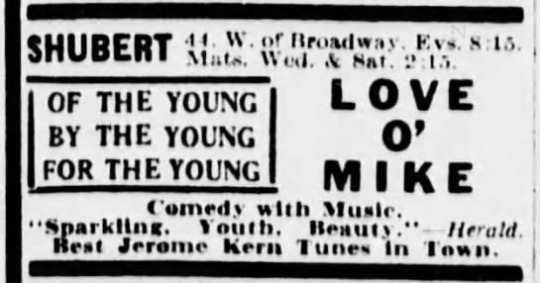
About the Venue: The Shubert Theatre was built by Lee and J.J. Shubert as tribute to their brother Sam, who died in a train crash in 1905. It has rarely been dark since opening in 1913. It is the flagship theatre of the Shubert Organization.
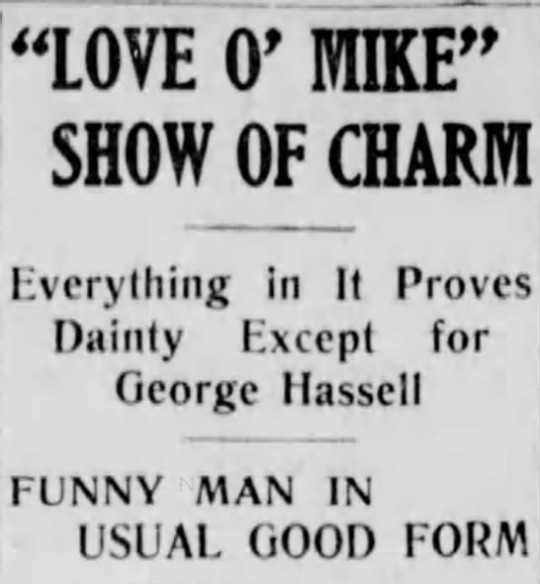
"’Love O’ Mike' is an excellent musical comedy for a pair of beginners, but when that has been said there remains little else that may be stated its favor. With due consideration for their youth and Inexperience, the piece is still disappointing because they had such excellent advisers.” ~ NEW YORK HERALD

The musical transferred to Maxine Elliott’s Theatre (109 West 39th Street) on March 19, 1917 and played there until June 30, 1917.

About the Venue: Lee Shubert sold actress Maxine Elliott the land for this theatre in exchange for fifty-percent interest in it - making Elliott one of the only female managers. It was leased to the Federal Theatre in 1936. In 1941, it became a radio station and, later, a television studio. In 1956, Elliott's heirs sold her share to the Shuberts, who then sold the property. It was demolished in 1960.

After taking the summer months off, the musical re-opened on August 27, 1917 at the Casino Theatre (1404 Broadway at 39th Street). Laurence Grossmith was replaced by Max Leeds, but much of the original cast remained. This relaunch would technically be kicking off a new theatre season. It played there until September 29, 1917.

About the Venue: Built for light musicals and operetta, the Casino showed mostly "polite vaudeville" starting in 1892. In 1903 the Shuberts acquired the lease. A 1905 a fire necessitated much reconstruction. In February of 1930, the theatre was demolished to make room for the expanding garment district.
The total run over all three theatres was 233 performances. After Broadway, the play decamped to Newark before moving to Buffalo and Boston.
The play toured extensively and eventually made its way to Atlantic City.

Love O’ Mike opened in Atlantic City on May 20, 1918 at B.F. Keith’s Garden Pier Theatre. The tour finally wrapped up in June 1918, 19 months after its first performance in Philadelphia.
#Love O' Mike#Jerome Kern#Shubert#Garden pier Theatre#Atlantic City#Peggy Wood#Laurence Grosssmith#George Hassell#Clifton Webb#Musical#Broadway Musical#Musical Comedy#Girls Will Be Girls#Shubert Theatre#Casino Theatre#Maxine Elliott's Theatre
4 notes
·
View notes